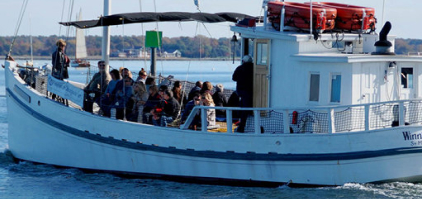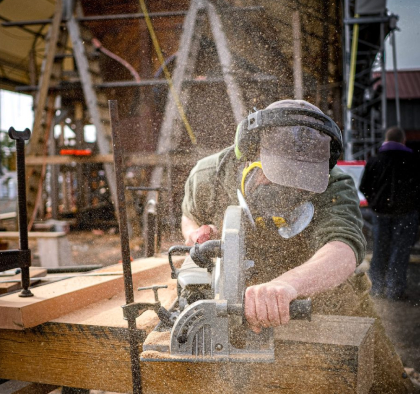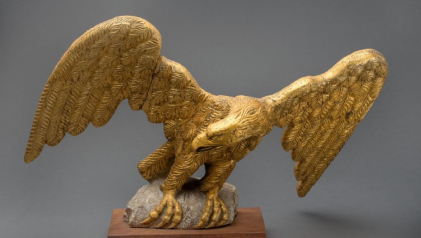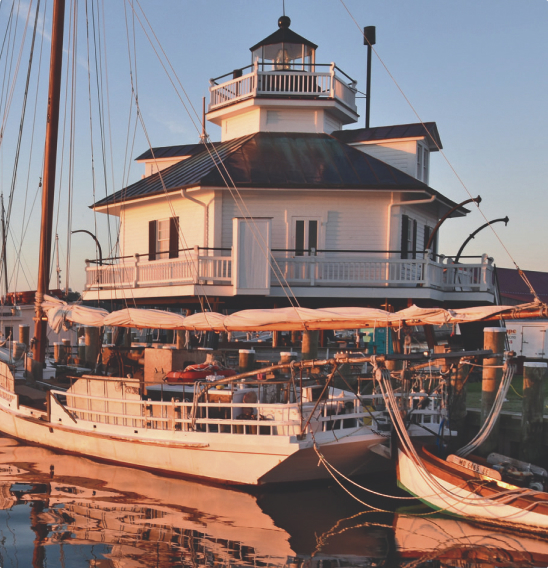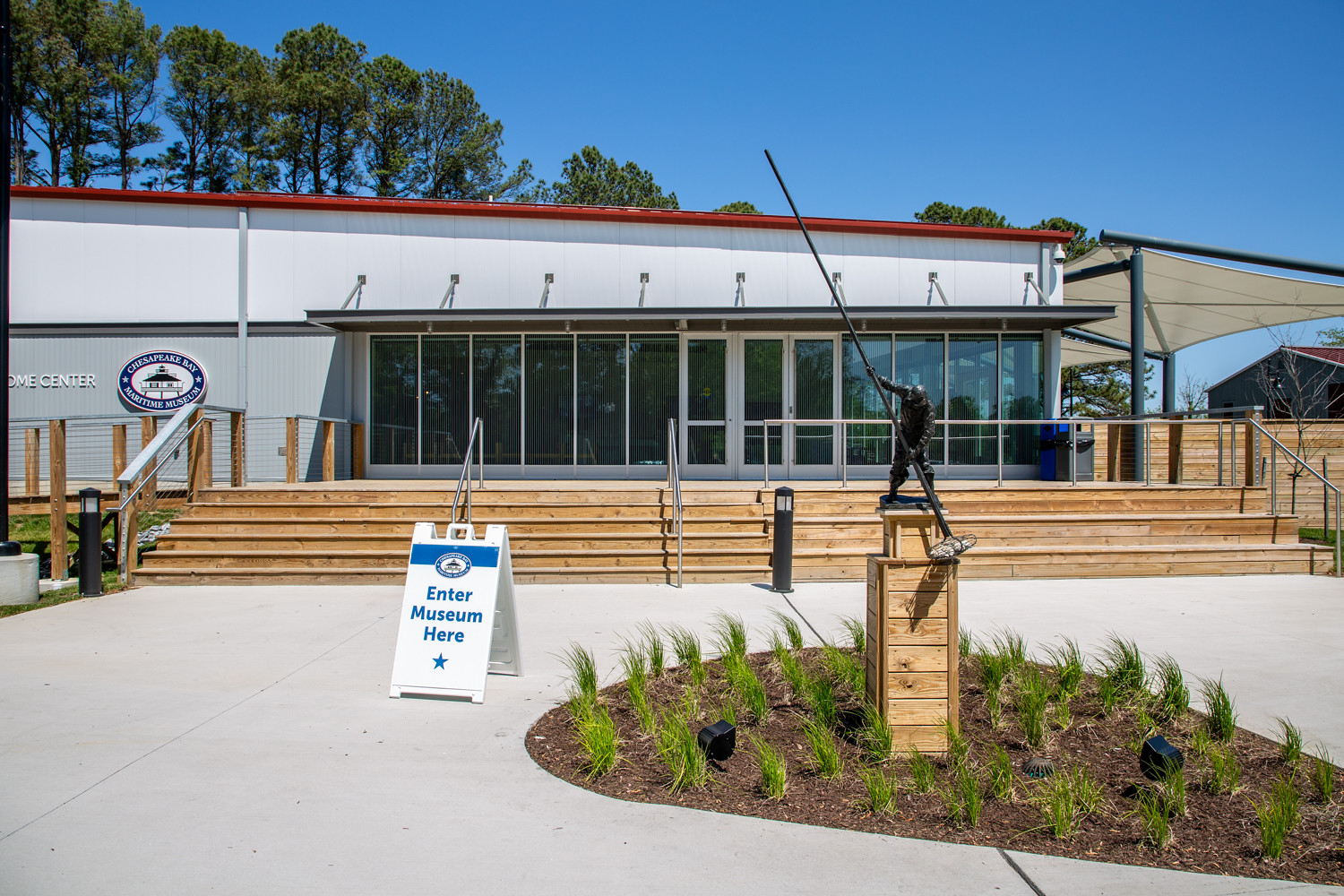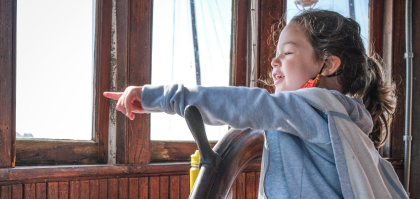CBMM’s Oyster Garden Workshop provides unique opportunity
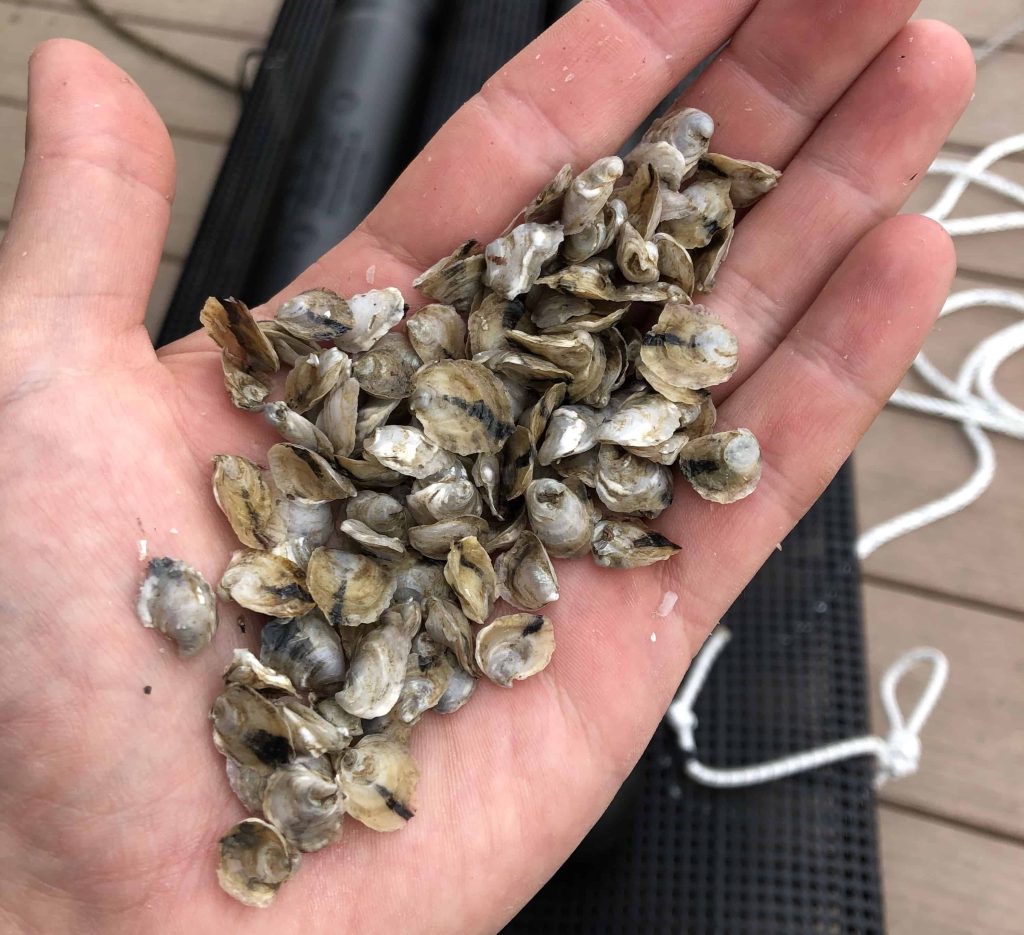
CBMM’s Start Your Own Oyster Garden workshop returns on Oct. 22, led by Dr. Lawrence Rudner.
ST. MICHAELS, Md., Oct. 13, 2022 – Mike and Jody Rennie take pride in welcoming out-of-town visitors to their home on the banks of the Miles River with a taste of the Eastern Shore.
“It’s neat when we have friends over to be able to actually serve them crabs that we’ve caught off the dock and oysters that we’re growing out there in the cages,” Mike Rennie said.
The oysters are a relatively recent addition to the hyper-local menu since the Easton, Md., couple took part in the Chesapeake Bay Maritime Museum’s Start Your Own Oyster Garden workshop in March 2021.
Led by Dr. Lawrence Rudner with support from CBMM Workshop Education Manager Kendall Wallace, the three-hour workshop provides all the information needed to successfully grow oysters off your dock. There are still spots available for the next one on Oct. 22 from 9am-12pm at Van Lennep Auditorium.
The first hour is devoted to the practical aspects of oyster gardening and explaining why oysters are vital members of the Bay ecosystem.
Then, participants get to work building their own oyster cages. All tools and materials are provided for everyone to head home with three floating cages full of seed oysters.
“There’s a lot to learn about oysters,” said Rudner, a retired statistician and master oyster gardener. “They are a part of the common culture of the area, and I enjoy helping people get a better understanding of them and how they grow.”
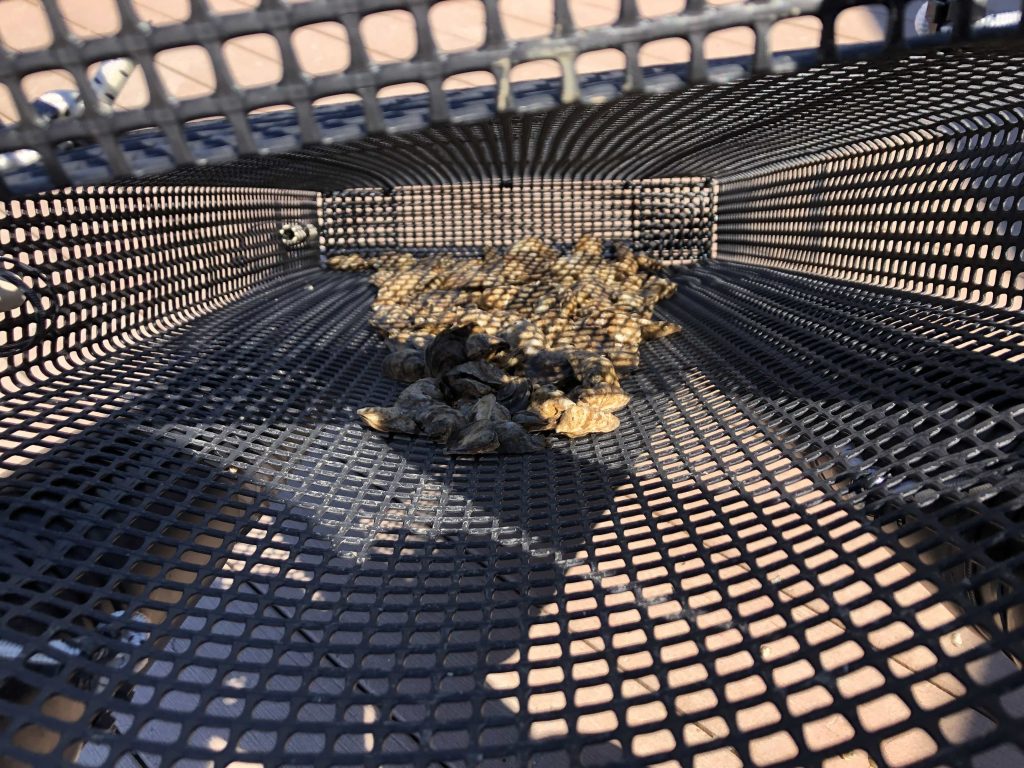
CBMM’s Start Your Own Oyster Garden workshop provides you with all the information needed to successfully grow oysters off your dock.
Rudner has been growing oysters off his dock in St. Michaels for the past 10 years, and over time, his hobby has become a passion. This will be his third time leading the workshop at CBMM.
Rudner’s presentation includes details on the difference between wild and aquaculture oysters, tips for protecting against the potentially lethal bacteria vibrio, info on how Maryland residents can write off oystering supplies on their taxes, and much more.
“Most people don’t realize that if you microwave oysters for a little bit, they open much easier,” Rudner said. “You can easily open up the shell, then put them back on ice, and you never know the difference. It’s much easier to shuck that way.”
Rudner provides a myriad of different interesting facts like that on all aspects of the Bay’s favorite bivalve to provide something new for everyone, touching on many of the themes highlighted in CBMM’s Oystering on the Chesapeake exhibition.
“It’s really a natural home for teaching this class,” Rudner said.
The son of an oyster biologist who grew up on the Bay’s Western Shore, Willem Roosenberg had more background on the topic than most when he took part in Rudner’s workshop.
The Ohio University professor owns a home in St. Michaels and spends every summer on the Eastern Shore doing terrapin research on Poplar Island. These days, he has five oyster cages floating off his dock and relishes the opportunity to enjoy oysters by the dozen on-the-half-shell, in bisque, and more.
“I’ve been eating oysters all of my life and have watched the populations here in the Chesapeake Bay decline,” Roosenberg said. “Ultimately, I do it because I love to eat the oysters. But also, it’s really satisfying to be growing my own and feel like I’m contributing to helping make the Bay a better place.”
After moving to the area from Pennsylvania, Mike and Jody Rennie were similarly intrigued to dive into a unique slice of Eastern Shore culture when they signed up to participate.
The couple found Rudner’s presentation engaging and the cage building process straightforward and enjoyable. Over the past year, the CBMM members have continued to reap the benefits from that morning on campus with six floating cages housing more than 1,000 oysters.
For the most part, the maintenance on the oyster cages is minimal. They merely need to be power-washed every few weeks in the summer months.
The thrill is in harvesting the oysters, experimenting in the kitchen with all sorts of recipes and then sharing their favorites with friends.
“We’ve had fun trying a lot of different things,” Jody Rennie said. “We’ve done Oysters Rockefeller, oyster stew, oyster casserole. Cooking them in basil and parmesan is pretty good, and you can’t beat butter and garlic.”
